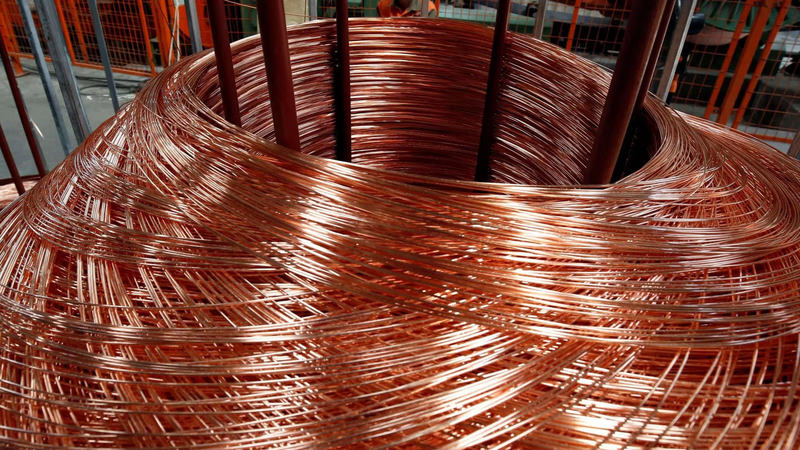
Copper"s antimicrobial properties enhance medical implants and treatments. "
Consuming or inhaling large amounts of copper can result in copper toxicity, also known as copper poisoning. Symptoms may include nausea, vomiting, abdominal pain, diarrhea, headache, dizziness, and in severe cases, liver and kidney damage. However, acute copper toxicity is relatively rare and is more likely to occur due to occupational exposure or accidental ingestion of copper salts or compounds. Wilson's disease is a rare genetic disorder that affects copper metabolism in the body. It causes copper to accumulate in various organs, particularly the liver and brain, leading to liver disease, neurological symptoms, and other complications. Treatment for Wilson's disease involves reducing copper intake and using medications that help eliminate excess copper from the body.
Some individuals may develop allergic reactions to copper, usually due to direct skin contact with copper-containing materials. Symptoms can range from mild irritation and rashes to more severe reactions such as dermatitis or eczema. Copper supplements or medications containing copper may interact with certain medications, such as zinc supplements or nonsteroidal anti-inflammatory drugs (NSAIDs). These interactions can affect the absorption, metabolism, or efficacy of the medications, so it is important to consult a healthcare professional before taking copper supplements.
This implant is made from a combination of collagen and bone repair materials called bioactive glass impregnated with copper particles. This tool has a porous folded structure that both absorbs blood vessels and provides a good space for bone cells to accumulate. The copper ions in this implant kill the infecting bacteria. In the initial tests, the implant reduced the population of Staphylococcus aurous by 60% and increased bone growth by 3.6 times. The new implant allows researchers to develop a one-step treatment for bone infection without the need for antibiotics, according to researchers.
Copper has antimicrobial properties and has been used in medical settings to reduce the risk of infection. Copper surfaces, such as doorknobs or hospital equipment, may help inhibit the growth of bacteria, viruses, and fungi. Copper bracelets or other forms of copper jewelry have been claimed to relieve symptoms of arthritis, although there is limited scientific evidence supporting these claims. The potential benefit may be related to the anti-inflammatory properties of copper or a placebo effect.
Copper is an essential nutrient for the human body, and it plays a vital role in various physiological processes. However, excessive exposure to copper, either through ingestion or inhalation of high levels, can lead to adverse health effects. On the other hand, copper has been used in traditional medicine and alternative therapies for various purposes, although scientific evidence supporting its effectiveness is limited.
The antimicrobial properties of copper make it a popular metal in medicine. Several hospitals have tested by covering covered surfaces such as bed rails and buttons with metal alloys to slow hospital-acquired infections. "Th e metal kills microbes by interfering with the electrical charge of cell membranes," said Cassandra Salgado, a professor of infectious diseases and epidemiologist at the University of South Carolina Medical University. Bone infections, which are usually caused by fractures, deep wounds, severe tooth decay, and the like, can lead to amputations and even death in serious cases, according to Sputnik. This type of infection is very difficult to treat. Researchers in Ireland have developed an implant that is surgically inserted at the site of a bone infection that simultaneously improves blood flow and bone growth and kills bacteria.
-
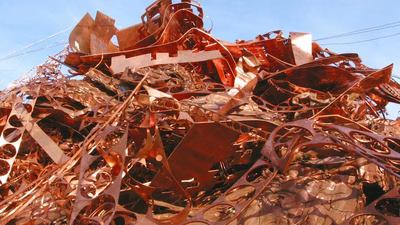
Copper recycling significantly conserves natural resources by reducing the need for new mining and extraction, thus preserving valuable copper ore reserves. The process requires 85-90% less energy than primary production, leading to lower greenhouse gas emissions and a reduced carbon footprint. Recycling also diverts copper waste from landfills, minimizing environmental pollution. The industry creates jobs in collection, sorting, processing, and manufacturing recycled copper, contributing to economic growth. Various sources of recyclable copper include wiring from electronics, pipes, fittings, and even discarded coins. The recycling process involves sorting, shredding, melting, and purifying to produce new copper products or alloys. Approximately 40% of annual copper alloy consumption comes from recycled materials. Copper"s properties such as high electrical and thermal conductivity make it essential in various applications including electrical transmission and heat exchangers.
Its corrosion resistance further enhances its utility across industrial sectors. "
-
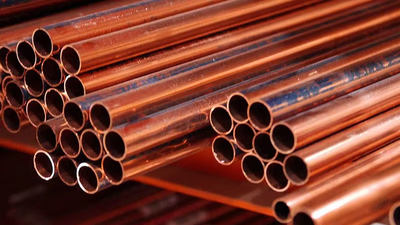
Copper ingots are primarily produced through smelting and casting, where copper ore is extracted, processed, and refined. The smelting process involves heating concentrated copper ore with fluxes in a furnace to separate impurities, resulting in molten copper. This molten metal is then poured into molds to solidify into ingots. An alternative method for producing copper ingots is electrolytic refining, which uses an acidic copper sulfate solution to deposit copper ions onto a cathode through electrolysis. Copper ingots come in various grades, with purity levels ranging from 99. 95% to 99. 99%. These ingots serve as a fundamental form of copper for manufacturing products and alloys.
Additionally, recycling processes can convert scrap copper into new ingots by shredding and smelting used materials like wiring and pipes. Copper has historical significance dating back to ancient civilizations and remains vital in modern applications due to its excellent conductivity and malleability.
-

The Middle East and West Asia exhibit a robust demand for copper, driven by urbanization, construction, and industrial growth. Key countries like Saudi Arabia, Iran, Turkey, and the UAE are experiencing significant infrastructure development that necessitates large quantities of copper for electrical wiring and plumbing systems. Despite having some mining operations, the region remains a net importer of copper, relying on imports from major producers such as Chile and Peru. Dubai and Istanbul serve as crucial trading hubs for copper distribution. The rise in population and disposable incomes has further increased the demand for electrical devices, making copper essential in manufacturing components like transformers and motors. Additionally, the region is witnessing a growing emphasis on copper recycling to promote sustainability. Global copper prices significantly influence the local market dynamics, affecting profitability across various industries. While the high cost of copper compared to alternatives like aluminum can deter some users, its superior conductivity and safety make it a preferred choice in electrical applications. The ongoing industrial expansion across sectors such as construction and automotive continues to drive copper consumption in this region.
-

Copper toxicity can occur from excessive consumption or inhalation, leading to symptoms like nausea, abdominal pain, and severe organ damage. Acute cases are rare and often linked to occupational exposure or accidental ingestion. Wilson"s disease, a genetic disorder affecting copper metabolism, results in copper accumulation in organs, necessitating treatment to reduce intake and eliminate excess copper. Allergic reactions to copper may arise from skin contact, causing irritation or dermatitis. Copper"s antimicrobial properties have led to its use in medical settings to reduce infection risks. Recent advancements include a bioactive implant that combines collagen with copper particles, significantly reducing bacterial populations and enhancing bone growth. This innovative approach offers a potential one-step treatment for bone infections without antibiotics. While copper is essential for various bodily functions, excessive exposure can lead to health issues.
Its traditional medicinal uses are often unsupported by scientific evidence, although some claim benefits for arthritis relief. The metal"s ability to inhibit microbial growth has prompted its application in hospital environments to combat infections. "
-
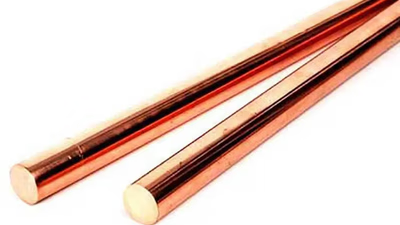
Copper is a vital transition metal, known for its high electrical and thermal conductivity. It has been utilized since ancient civilizations, marking the beginning of the Bronze Age. Found in various minerals, copper is primarily extracted from ores through mining processes. Its applications span across electrical wiring, plumbing, and architecture, making it the third most widely used industrial metal globally. The majority of copper consumption is attributed to electrical applications, with significant recycling potential that enhances its sustainability. Copper alloys like bronze and brass exhibit improved properties, further expanding its utility. Additionally, copper"s antimicrobial properties make it valuable in medical settings. However, the environmental impact of copper mining necessitates sustainable practices to mitigate habitat destruction and pollution. "
-
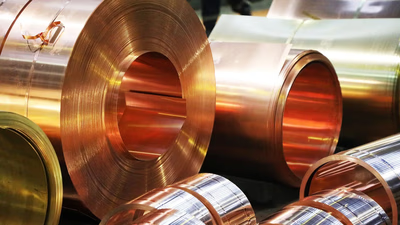
Copper and its alloys, including bronze, brass, and cupronickel, play a significant role in various industries due to their unique properties. Bronze, an alloy of copper and tin, is known for its strength and corrosion resistance, making it ideal for sculptures and mechanical components. Brass, primarily composed of copper and zinc, is valued for its malleability and attractive appearance, commonly used in musical instruments and plumbing fittings. Cupronickel combines copper with nickel to enhance corrosion resistance in marine applications. Other notable alloys include leaded brass for improved machining properties and special alloys like aluminum bronze that offer high strength and thermal conductivity. The classification of these alloys is based on their composition, with variations such as alpha brass (less than 37% zinc) and phosphor bronzes that include additional elements for enhanced performance. Understanding these types of copper alloys is crucial for businesses engaged in import-export activities within the Middle East trade platform.
-

Copper is a vital metal extensively used across various industries, particularly in electricity and construction. Its excellent conductivity makes it the preferred choice for electrical wiring, power cables, and electronic devices. The electricity sector is the largest consumer of copper due to its efficiency in transmitting electricity. Additionally, copper"s strength and resistance to corrosion enhance its suitability for motors and converters. In telecommunications, copper remains essential for high-speed data transmission despite advancements in fiber optics. The metal"s versatility extends to building construction, where it is utilized in plumbing, roofing, and heat transfer systems. Its recyclability adds an environmental benefit, allowing for sustainable practices in construction. Copper"s unique properties also contribute to safety; it does not burn or release harmful gases during fires and helps prevent bacterial growth in water supply systems. Overall, copper"s multifaceted applications underscore its importance in modern infrastructure and technology.







